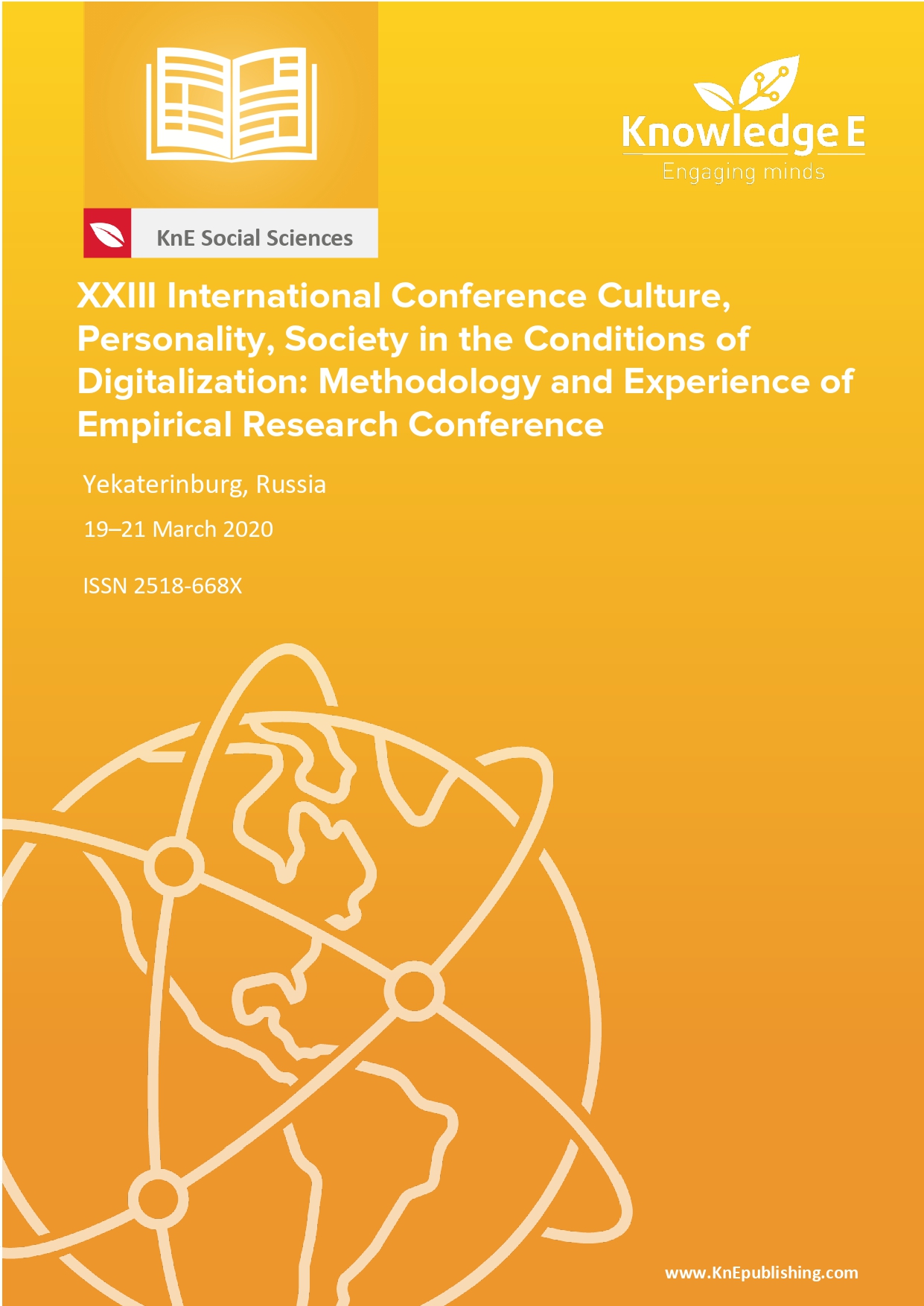Modern Prose As a Multimedia Hypertext (Using the Example of the Table-Talk 1882 Story By Boris Akunin)
DOI:
https://doi.org/10.18502/kss.v5i2.8392Abstract
This article is devoted to text comprehension in the era of online literature, which implies a closer interaction with the reader than ‘a paper format’ one. As an illustration of the named trends using hypertext, the project by Artemy Lebedev “To Favorable Attention, Illustrations to the Project Table-Talk 1882. (Based on the work of the same name by B. Akunin)”, created in 2004, was chosen. The project is a visualization of text details, divided into eight chapters. The text of Akunin’s story was aimed at play with the reader. First the author and his fans publish an abridged version of the story in the network, then the detective announces the key to the crime, and asks readers to write a sequel. The project of Artemy Lebedev is a kind of attempt to write a sequel particularly by visual means. Similar experiments with a text are characteristic of postmodern literature: numerous interpretations of the text interact with each other and multiply its intertextual connections. Thanks to electronic format authors expand the boundaries of the text, creating various versions. In fact, the text generated by Internet navigation has the same quality: the reader, following the links, independently creates the text seen by each user of the network, as a result — the text is individual. Authors of publications cannot create texts with the same features: many works have a continuously developing plot that does not allow mixing fragments of texts. A detective as a genre that implies a play with a reader: in the classic detective stories of Arthur Conan Doyle and Agatha Christie where the reader tries to figure out who committed the crime. The digital format allows transferring this game with the reader to the network and beating the layering of the text in a new way.
Keywords: Postmodernism, Akunin, online literature, digital text
References
Akunin, B. (2007). Table-talk 1882. Retrieved December 25, 2019 from www.rulibs.com/ru_zar/ det_classic/akunin/0/j1.html.
Barthes, R. (1989). The Death of the Author. Selected Works: Semiotics, Poetics. Moscow: Progress, pp. 384–391.
Old.Guelman.ru. Retrieved January 15, 2020 from www.old.guelman.ru/slava/akun.html.
Fiedler, L. (1972). Cross the Ditches, Fill the Borders. New York: Stein and Day, pp. 462–518.
Kim, L. R. (2018). Network Literature: The Theoretic Aspects of Study. (PhD thesis, Moscow State University, 2018).
Krotova, D. V. (2018). Modern Russian Literature. In Postmodernism and Neomodernism (editor D.V. Krotova). Moscow: MAKS-Press, pp. 224.
Lipovetskiy, M. N. (2008). Paralogii: The Transformations of (Post)Modern Discourse in Russian Culture of 1920-2000. Moscow: New literature review, pp. 848.
Makhortova, G. (2014). Dao and Postmodernism of Creations by Boris Akunin. Retrieved from www: //snob.ru/profile/28186/blog/73668.
Ong, W. J. (1982). Orality and Literacy: The Technologizing of the World. London: New York, pp. 224.
Artlebedev.ru. Retrieved February 2, 2020 from www.artlebedev.ru/backstage/1882-1/.
Flammberg.livejournal. Retrieved February 5, 2020 from www.flammberg.livejournal.com/18081.html/.

